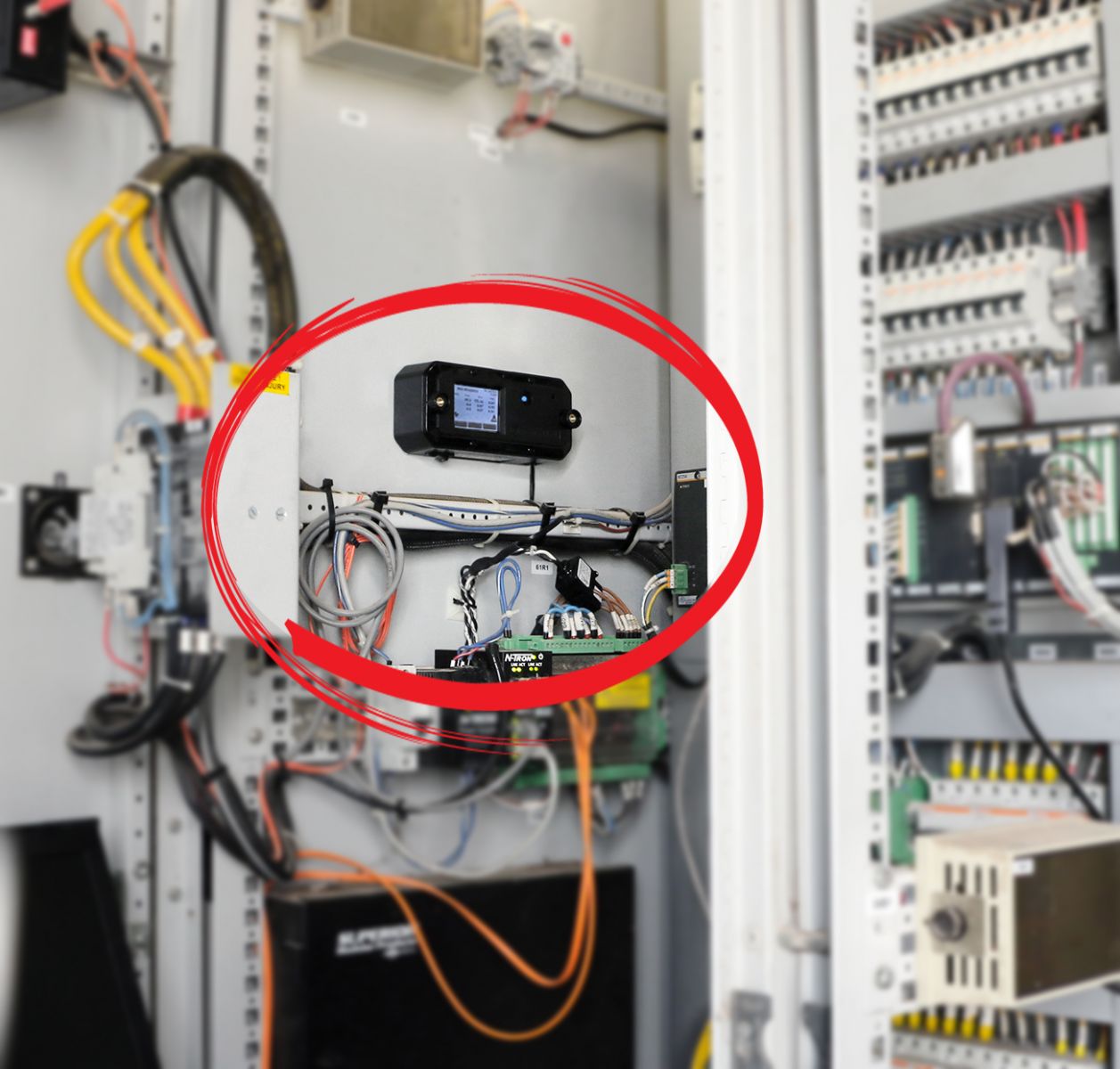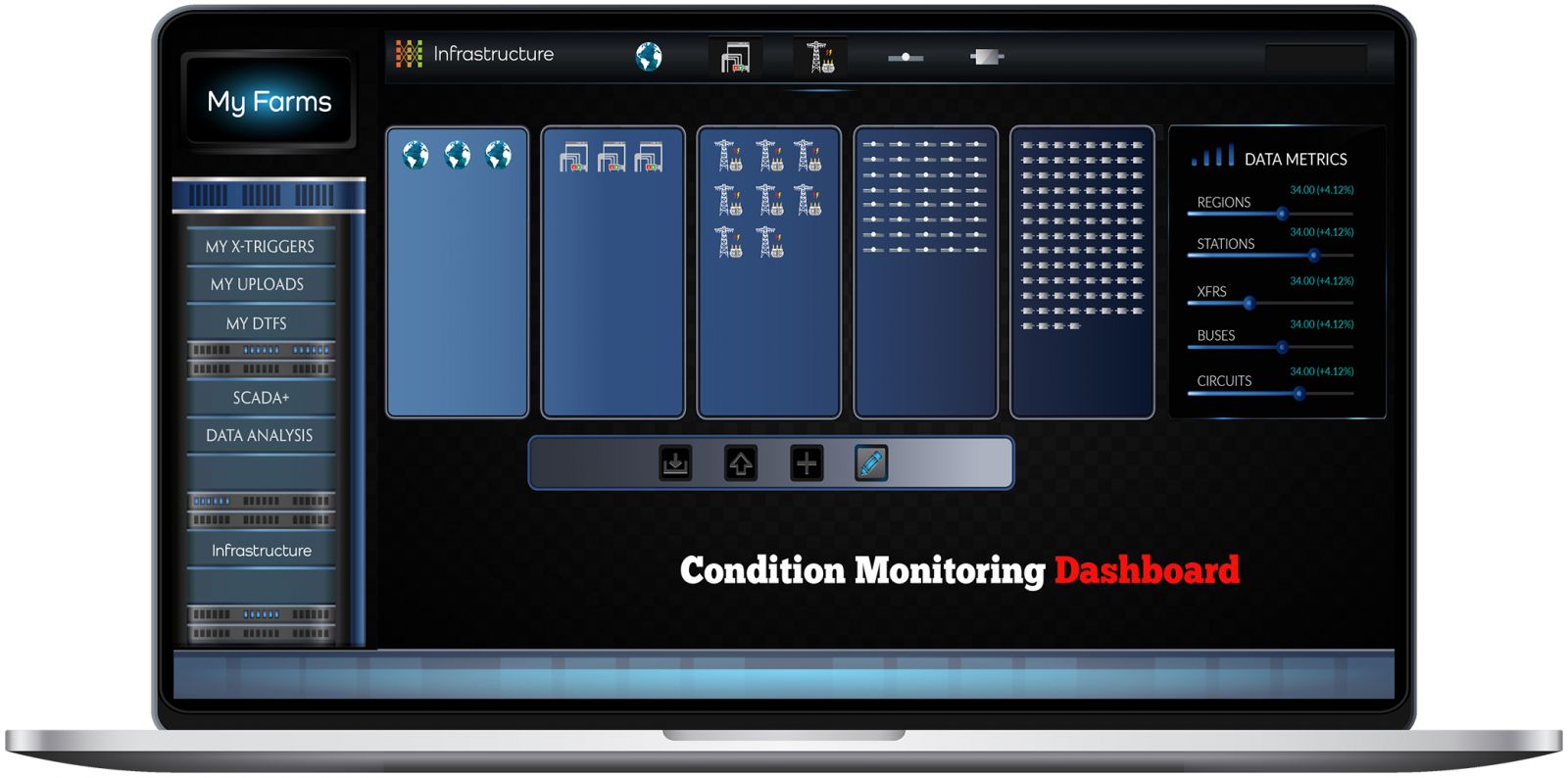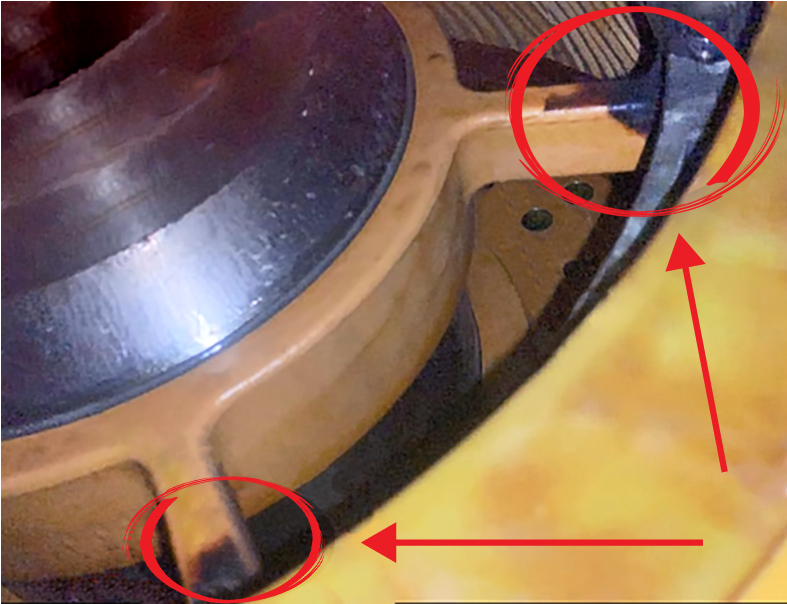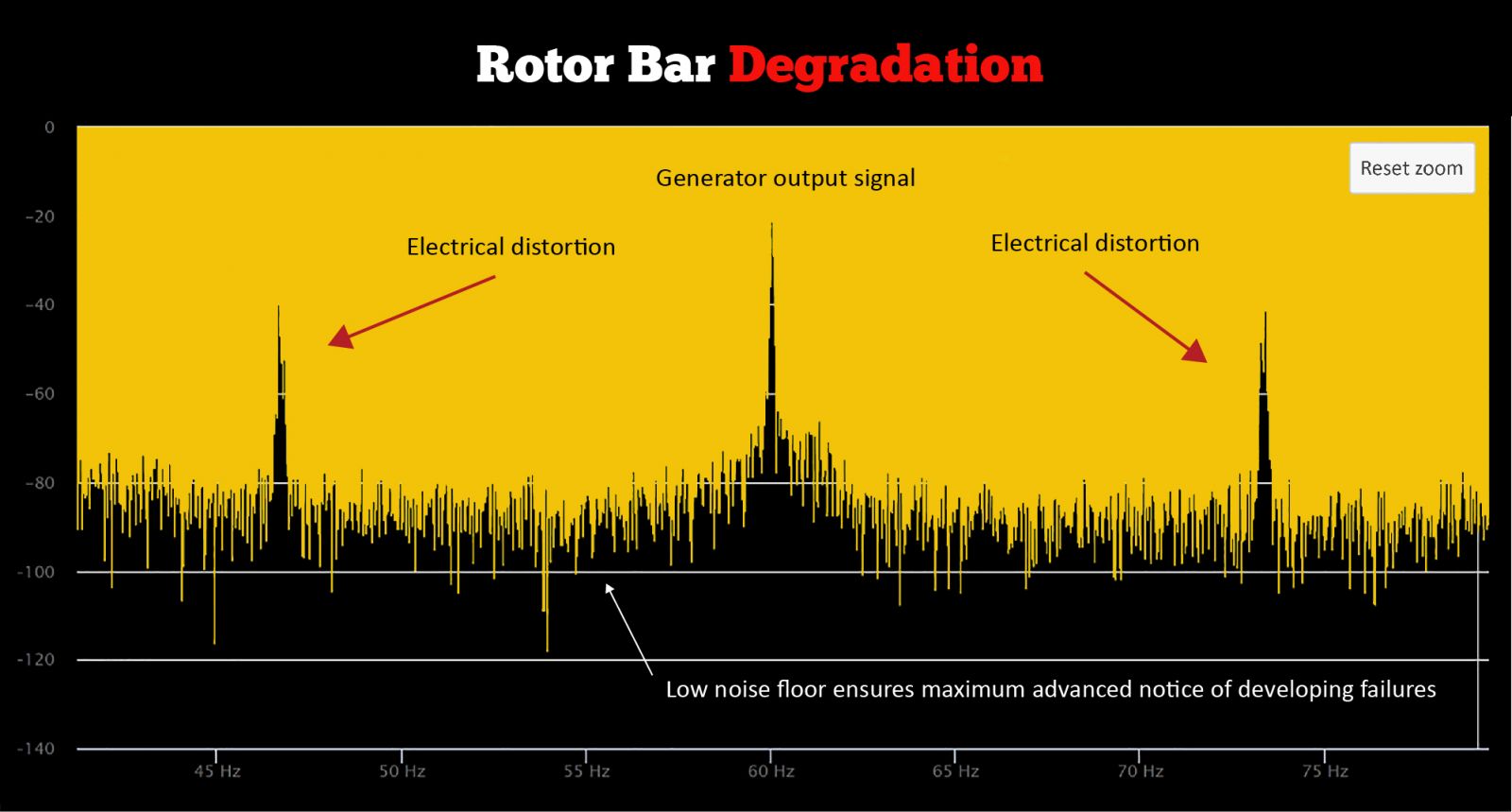Time to Get Serious about Condition Monitoring
Wind farm profitability does not need to be razor thin
It's no secret that one of the reasons wind farms operate on such thin margins is the high cost of maintenance and repair. In traditional wind turbine condition monitoring systems, many developing failure modes go undetected for several months until finally sensed by a vibration, or a temperature sensor leads to excessive incidents of unplanned outages and costly repairs. As a result, the industry has become all too accustomed to thin operating margins.
Imagine the savings you could realize if you had prior knowledge of early indications of failure, both mechanical and electrical, many months before actual failure.
A proven technology is now making its way across the wind generation industry. This technology is widely adopted and has been successfully utilized for decades within industrial plants to monitor the health of rotating equipment. Motor Current Signature Analysis (or MCSA) operates on the principle that the health of a rotating machine (motor or generator) is actually contained within the electrical signal emanating from the machine. Astute wind farm owners and operators are adopting this new-to-industry monitoring technology in order to proactively manage their asset maintenance programs, thereby reducing cost and improving availability. As a long-term benefit, this also reduces the stress on internal generator and drive-train components, helping to extend the life of the wind turbine.
One of the key benefits of Electrical Signature Analysis over traditional monitoring technologies is that it provides early insight into both mechanical and electrical health-related conditions, including those that typically do not exhibit mechanical vibration or rises in temperature until just before failure, if ever.
What is Electrical Signature Analysis?
Based on the physics of a circular rotating machine, the output signal of a wind turbine has a sinusoidal shape, alternating up-and-down, at a frequency of 50 or 60 times per second (depending on the country in which it is designed to operate). Each sub-component has been specifically designed to play a key role in helping the generator rotate in a near uniform fashion and, in turn, create a near perfectly-shaped sinusoidal output signal. Over time, as internal components begin to degrade, their contribution to this overall electrical output signal also begins to degrade; initially as a microscopic distortion, and ultimately on a catastrophic level if preventative action is not taken in time. It has been proven that each such distortion not only consistently repeats over-time, but can also be pre-associated with a specific sub-component so that the health of each system sub-component can be monitored, tracked, and trended over time for changes in severity, and used as actionable insight as part of a best-practices proactive maintenance program.
Continuous monitoring of each specific distortion within the output signal of the generator provides wind farm operators new insights to keep their turbines running longer and more efficiently.
 How easy is this to implement?
How easy is this to implement?
Implementing a system to monitor the electrical output of a wind turbine generator system is surprisingly easy, either up or down-tower and on or off-shore. Unlike installing a mechanical vibration monitoring system, MCSA sensors do not require any modifications to chassis or complicated inter-connect wiring. In fact, many electrical signal monitoring devices get their operating power from the electrical signal they are monitoring. The electrical current signal is monitored by simply snapping an insulated hinged electrical sensor around one or more system phase wires, without having to disconnect the circuit. (as seen on the right) With continuous, real-time monitoring, results can be sent to a remote server, providing up-to-the-minute status of the health of each sub-component.
Best of both worlds with Edge Intelligence and remote server
As with many condition monitoring systems, there is a tremendous amount of data being processed. The amount of data processed from multiple turbines across multiple locations can be significant. To minimize bandwidth usage on your existing network, it is wise to implement a condition monitoring system that contains sufficient intelligence "at the edge" (within the wind turbine), reporting up to the server only relevant datasets (containing new and/or useful information). Such systems are able to efficiently assess the health of each component relative to its own performance history, and compare them against like components from like wind turbines, whether in the same farm or in other farms. High-level summary analysis (real-time and forecasted) can then be performed across multiple wind farms, providing meaningful information and statistics to senior level operations directors and financial planners alike. (below)

A real world example
One of the most-costly types of failures wind farm operators contend with is a rotor bar fracture. A rotor bar is an internal assembly deep within the generator that rotates at high speed. If a developing fracture is left unattended, this condition can ultimately lead to catastrophic failure; rotor fragments can become dislodged, damaging complicated winding structures at high speeds - upwards of 3600RPMs in some generators.
 Such unplanned outages cost wind farms heavily in terms of expensive repairs and loss of availability. (as shown at right) This type of failure mode is typically caused by alternating odd harmonic signals (an electrical phenomenon which typically causes no vibration and, as such, generally go undetected by vibration sensors). Alternating odd harmonics (frequencies at multiples of the primary output signal) exhibit a repetitive push/pull condition creating severe physical stress on the rotor bar/joint assembly. Fortunately, with continuous electrical signal monitoring, rotor bar degradation can be detected very early, many months before actual failure. An early and tell-tale sign of a pending rotor bar failure can be seen by observing odd harmonic signals, especially those high in energy and belonging to both positive and negative harmonic families. In advanced stages of degradation, harmonic distortion on either side of the system operating frequency is observed, equally spaced proportional to twice the system slip frequency. It is important to know the 'noise floor' of the monitoring system you are utilizing. Noise floor is an important parameter in monitoring systems, as it determines the lowest possible signal level that these systems can measure. The lower the noise floor of your monitoring system technology, the more advanced notice is given for pending failures. (below)
Such unplanned outages cost wind farms heavily in terms of expensive repairs and loss of availability. (as shown at right) This type of failure mode is typically caused by alternating odd harmonic signals (an electrical phenomenon which typically causes no vibration and, as such, generally go undetected by vibration sensors). Alternating odd harmonics (frequencies at multiples of the primary output signal) exhibit a repetitive push/pull condition creating severe physical stress on the rotor bar/joint assembly. Fortunately, with continuous electrical signal monitoring, rotor bar degradation can be detected very early, many months before actual failure. An early and tell-tale sign of a pending rotor bar failure can be seen by observing odd harmonic signals, especially those high in energy and belonging to both positive and negative harmonic families. In advanced stages of degradation, harmonic distortion on either side of the system operating frequency is observed, equally spaced proportional to twice the system slip frequency. It is important to know the 'noise floor' of the monitoring system you are utilizing. Noise floor is an important parameter in monitoring systems, as it determines the lowest possible signal level that these systems can measure. The lower the noise floor of your monitoring system technology, the more advanced notice is given for pending failures. (below)

Comprehensive monitoring of individual components helps wind operators make more accurate decisions that keep their turbines running longer and more efficiently.
Adept wind farm operators realize it is no longer a decision of whether to implement predictive analytics, but when. Having a systematic approach to reducing downtime and associated labor costs may ultimately be the determining factor of who thrives (or survives) in this new era.
To adapt to this new level of opportunity, it is critical to implement an effective remote health monitoring system that is not only easy to deploy, but also has a track record of proven results.
Artificial intelligence and machine learning coupled with Edge IoT and Big Data technologies are being used to continually monitor the output of wind turbine generators to provide new insights into the health of internal components. By doing so, wind farm operators can minimize stress on system components - not only to improve production availability, but also to significantly increase the operational life of their wind turbine assets. With the ability to detect degradation weeks and months before physical and vibrating symptoms are observed, operators have a greater ability to strategically plan repair and maintain optimal energy delivery.
Gregory Wolfe is CEO/CTO and Co-Founder of Fischer Block, Inc. His roots are in designing missile guidance systems for the United States Air Force. He later obtained certification as a black-belt in Six-Sigma statistical techniques while holding leadership positions within the electrical power industry, running operations in both the United States and in Europe before co-founding Fischer Block, Inc. He can be reached at [email protected].
Fischer Block, Inc. | www.fischerblock.com
Author: Gregory R. Wolfe
Volume: 2021 September/October








